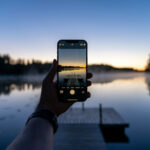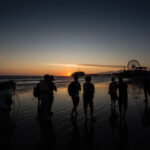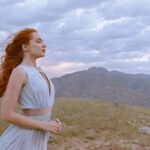Manual lenses are becoming more popular as adapters make it easier to use whatever lens you like. But surprisingly, they also have the added benefit of making you a much stealthier photographer. Mark Wallace gives us a tutorial on how to set up your manual lens and throws in some practical tips for when and where a manual lens can be best utilized:
All lenses used to be manual before digital photography came along; it was the norm to manually set your aperture and manually focus your shot. A lot of cameras coming out now have the ability to accept adapters that allow you to put on whatever lens you like, though this means you lose the ability to auto focus or set the aperture through the camera itself. Similarly, manual lenses are becoming more popular as they have some added benefits.
Set Your Aperture
First, set your aperture value. On a manual lens you can twist a dial for your aperture and select whether you’d like to have a shallow depth of field or a photo with a lot in focus.

Only the model in front is in focus because the depth of field is shallow.
The model in front is only in focus because the depth of field is shallow.

With an aperture setting of f/16, almost everything is in focus, so you can clearly see both models.
Use the Depth of Field Guide
Wallace shows us that after selecting your aperture you can also set your focal distance and then see your depth of field range.
If you know you want to shoot a subject that is 8 feet away at f/8, set your focal distance, and the set of numbers on the bottom ring will show you that the subject will be in focus between 3.5 feet and beyond infinity.
Street Photography
A fun application of this tool is that you can preset your lens before going out and have a pretty good idea of what will be in focus without even looking through your viewfinder. If you were to set your lens as it is above, you’d know that anything around 8 feet away would be in focus.
You could walk around with your lens pre-set and snap away while holding your camera at hip height and no one would even know you were taking their photo. Sometimes this can result in a more candid shot.
Whether this technique is for you or not, mastering the use of a manual lens will help you better understand your camera and can come in handy if you’re ever using a lens adapter that limits the use of anything automatic.
Like This Article?
Don't Miss The Next One!
Join over 100,000 photographers of all experience levels who receive our free photography tips and articles to stay current:








Thorough explanation on DOF. Thanks.
Future article? As long as you were talking about depth of field and the depth of field guide, you could also add a separate piece on using that same guide to determine hyperfocal distance for things like landscapes and, even, other portraiture. Manual lenses make that particularly easy with their guide.
Maryanne,
In the two photos demonstrating depth of field, how did you manage to get exactly the same exposure results when switching from f/1.4 to f/16 without also changing either the ISO (200) or the shutter speed (1/4000 second)? I have never been able to do that, so I’m looking for an explanation of the miracle.
I know this is 5 years late but, I’m guessing ND filter
Oh, what a short memory people have these days. “All” lenses were NOT manual before digital. Fully automatic lenses and cameras were cranking out negatives since the 1980’s! (Like my Nikon N2020, introduced in 1986) That’s WELL before digital, certainly before DSLRs.